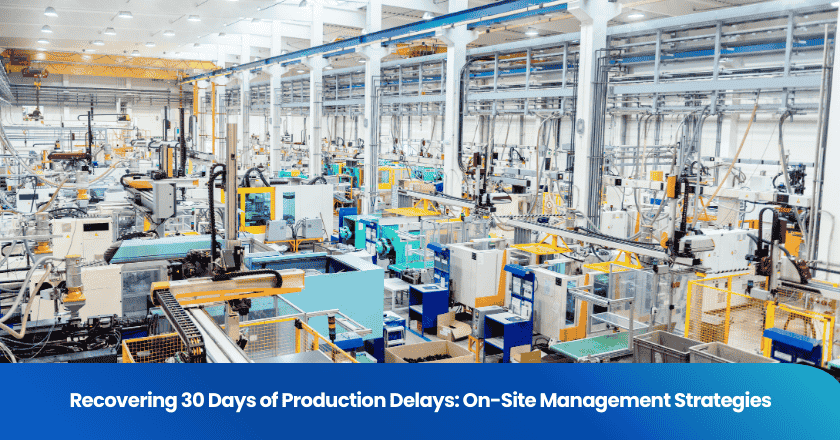
In the highly competitive apparel industry, quality assurance organizations play a crucial role. They not only ensure that every garment meets strict quality standards, but also improve the overall quality of products and consumer satisfaction through continuous quality improvement processes. For brands, it means higher reputation and stronger market competitiveness.
The quality assurance organization has set a quality benchmark for the garment industry by implementing a series of strict standards and inspections.
In-depth exploration of quality assurance in the clothing industry
In the clothing industry, quality assurance is the cornerstone to ensure that every product can meet the highest standards. It is not just a process, but also a guardian of brand reputation and consumer loyalty.
Definition and Core Importance
What is quality assurance?
Quality Assurance (QA) is a comprehensive and systematic strategy that runs through every stage of a product's design and delivery, aiming to ensure that clothing not only meets established quality standards but also exceeds consumer expectations. In the clothing industry, this method covers the careful selection of raw materials, strict monitoring of the production process, and meticulous inspection of the final product to ensure that each step meets the highest standards.
Clothing is not only a basic need to cover the body and avoid the cold, but also a reflection of personality, culture, and even social status. A high-quality garment can enhance the wearer's self-confidence and convey a unique personal style. Therefore, the quality of clothing is directly related to consumers' willingness to purchase, satisfaction, and brand reputation. In a highly competitive market, high-quality clothing is the key to brand differentiation.
Quality Assurance and Quality Control: The Two Wings of Progress Together
Although closely related, quality assurance (QA) and quality control (QC) have different focuses. Quality assurance focuses more on building and maintaining a comprehensive management system that reduces the occurrence of quality problems through preventive measures and ensures the robustness of the production process. Quality control focuses on directly verifying whether the product meets the established quality standards through specific inspection, testing, and measurement methods.
Quality assurance organizations play a crucial role in garment production. They not only monitor the production process through regular audits and evaluations, but also actively identify and solve potential quality issues, thereby promoting the continuous optimization of the production process. This culture of continuous improvement enables clothing companies to maintain high quality while continuously improving production efficiency and reducing costs, ultimately providing consumers with better quality and more cost-effective products.
Methods and tools of quality assurance agencies
Quality assurance agencies play a crucial role in the garment industry, using a range of scientific methods and advanced tools to ensure that every garment meets the highest standards.
Technology package: the cornerstone of quality control
The technical package is one of the core tools of the quality assurance organization. It is a detailed and comprehensive set of guidance documents that provide a clear framework and basis for quality inspection.
Technical packages usually contain multiple key components, where detailed inspection standards specify specific requirements for each quality indicator; The sampling plan scientifically stipulates how to select samples for representative testing; The testing method provides specific operational steps and judgment criteria; The process for handling non-conforming products elaborates on how to promptly and effectively handle non-conforming products when they are discovered. These components together form a complete quality control system.
Through the technology package, the quality assurance organization can ensure that each step of inspection strictly follows established standards, reducing the subjectivity and arbitrariness of human judgment. This not only improves the accuracy and efficiency of inspection, but also ensures the continuity and consistency of quality control. The application of the technology package has enabled every detail in the production process to be fully monitored and controlled, thus creating an indestructible quality line of defense.
Online production inspection: real-time monitoring, accurate error correction
Online production inspection is another important quality control method for quality assurance organizations. It ensures that every link meets quality standards by conducting real-time monitoring and inspection of key nodes in the production process.
Online production inspection covers the entire process from raw material inspection to finished product sampling. During the raw material inspection stage, strict screening and testing are conducted on raw materials to ensure that only those that meet the standards can enter the production process; During the inspection stage of semi-finished products, through sampling inspection of semi-finished products during the production process, deviations in the production process can be detected and corrected in a timely manner; During the sampling inspection stage of finished products, random sampling of finished products is conducted for comprehensive inspection to ensure the quality and stability of the final product.
The biggest advantage of online inspection is that it can detect and correct problems in the production process in a timely manner, thereby effectively reducing the generation of defective products. This real-time feedback mechanism not only improves production efficiency and product quality, but also reduces production costs and scrap rates. At the same time, online inspection can also enhance the sense of responsibility and quality awareness of the production team, and promote the continuous optimization and improvement of the entire production process.
Through the application of advanced methods and tools such as technology packages and online production inspections, quality assurance institutions have built a solid quality barrier for the garment industry, ensuring that every garment can be presented to consumers in the best condition.
Benefits of garment quality assurance
Garment quality assurance is not only a necessary means to ensure product quality, but also an important way to enhance the competitiveness of enterprises and enhance consumer trust.
Consistent quality: create a stable consumption experience
In the clothing industry, quality consistency is an important criterion for measuring the professionalism and reliability of a brand.
By rigorously implementing quality assurance processes, apparel companies can ensure that every product, regardless of production batch, meets the same high quality standards. This consistency is not only reflected in the appearance and performance of the product, but also throughout the entire user experience, providing consumers with a stable and reliable consumption experience.
Clothing of consistent quality can better meet consumer expectations and reduce consumer dissatisfaction and complaints caused by fluctuations in product quality. This stability and reliability can significantly enhance consumer loyalty and trust in the brand, laying a solid foundation for the long-term development of the enterprise.
Cost-effectiveness: achieving efficient use of resources
Quality assurance is not only related to product quality, but also closely linked to the cost-effectiveness of the enterprise.
Through professional inspection and monitoring, quality assurance organizations can detect and prevent the production of defective products in a timely manner, thereby significantly reducing the waste of raw materials and human resources. This preventive measure not only reduces production costs but also enhances resource utilization efficiency, thereby creating greater economic value for the enterprise.
By continuously improving production processes and enhancing product quality, companies can use resources more efficiently and reduce unnecessary waste and loss. This optimization not only reduces production costs, but also improves production efficiency, enabling enterprises to maintain stronger competitiveness in the fierce market competition.
Enhance brand image: win market recognition
In the highly competitive apparel market, brand image is the key for enterprises to gain market share and consumer trust.
High-quality clothing can win the trust and praise of consumers, and this trust is the cornerstone of the long-term development of the brand. When consumers have trust in a brand, they are more willing to choose the brand's products and even recommend them to friends and family, thereby further enhancing the brand's popularity and reputation.
In a highly competitive market, clothing companies with a good brand image are more likely to gain market share and competitive advantage. By providing high-quality clothing and excellent service, companies can establish a unique brand image in the minds of consumers, stand out from the fierce market competition, and occupy a more favorable market position.
Challenges and responses of quality assurance institutions in the process of transformation
With the rapid development of the garment industry and the continuous advancement of technology, quality assurance institutions are facing unprecedented challenges. How to adapt to industry changes while maintaining high quality standards has become a key issue that quality assurance organizations must address.
Adapting to the fast fashion trend: the dual test of speed and quality
The fast fashion trend has become a highlight in the clothing industry with its characteristics of rapid response to the market and meeting the changing needs of consumers. However, this also poses a huge challenge to quality assurance institutions.
In the fast fashion model, clothing companies need to quickly transform designs into products and bring them to market in order to seize fleeting market opportunities. However, this does not mean that product quality can be sacrificed. Quality assurance organizations must find a balance between speed and quality to ensure that each product meets high standards of quality while producing quickly. This requires quality assurance agencies to continuously optimize inspection processes, improve inspection efficiency, and ensure the strictness and consistency of inspection standards.
To meet the challenges brought by fast fashion, quality assurance organizations need to constantly update inspection standards and methods to adapt to new production technologies and materials. This means that quality assurance agencies must maintain a keen insight into market dynamics, keep abreast of new production technologies and material characteristics, and develop more scientific and effective inspection standards and methods. This strategy of continuous updating and upgrading is the key for quality assurance agencies to maintain high standards of quality in the fast fashion trend.
Technological progress: opportunities and challenges coexist
With the rapid development of intelligent manufacturing and automation technology, the garment industry is experiencing unprecedented technological changes. This change has brought new opportunities and challenges to quality assurance institutions.
Intelligent manufacturing and automation technology provide more efficient and accurate means for quality inspection. Quality assurance organizations need to actively integrate these new technologies into the quality inspection process to improve the efficiency and accuracy of inspection. For example, using automated inspection equipment to quickly and accurately detect the size, color, defects, etc. of clothing can greatly improve inspection efficiency and reduce human error.
The introduction of new technologies has put higher demands on the skills and knowledge of inspection personnel. Quality assurance organizations need to strengthen training and development for employees to ensure that they can adapt to new technologies and processes. This includes providing regular technical training, organizing technical exchange activities, and helping inspectors master new skills and knowledge, thereby enhancing their professionalism and comprehensive abilities. At the same time, the quality assurance organization also needs to establish an incentive mechanism to encourage employees to actively learn and innovate, providing strong support for the continuous improvement of quality inspection work.
Facing the challenges of fast fashion trends and technological progress, quality assurance organizations need to constantly innovate and upgrade to adapt to industry changes and developments. By finding a balance between speed and quality, continuously updating inspection standards and methods, integrating new technologies, and strengthening employee training and development, quality assurance institutions can maintain a leading position in the transformation and contribute to the high-quality development of the garment industry.
END
Quality assurance organizations play an indispensable role in the apparel industry.
By implementing strict quality standards and inspection processes, they ensure the consistency and high quality of clothing products, thereby enhancing consumer satisfaction and the brand's market competitiveness.
With the continuous development of the industry and the progress of technology, quality assurance institutions will continue to adapt and innovate to meet new challenges and trends, and to ensure the sustainable development of the garment industry.
Grow your business with TradeAider Service
Click the button below to directly enter the TradeAider Service System. The simple steps from booking and payment to receiving reports are easy to operate.



